Murphy has always been shy – but he’s also a people watcher. He first connected with faces whilst leafing through magazines as a child, before discovering photography could be art. “The face is a landscape we can relate to so easily yet there is still potential to create open narratives within portraiture,” he explains.
Today portraiture is the genre for which he is renowned. Whether on commissioned shoots with public figures or personal projects investigating society’s outsiders, he exploits all the technology available to him.
There’s a quiet intensity that runs through his images: a pensive Mark Rylance, masked urban dirt bikers Izzy and Naomi, and their dog, Zeus, or the mud-splashed jockey, Katie Walsh, which won him the 2013 Taylor Wessing Portrait Prize.
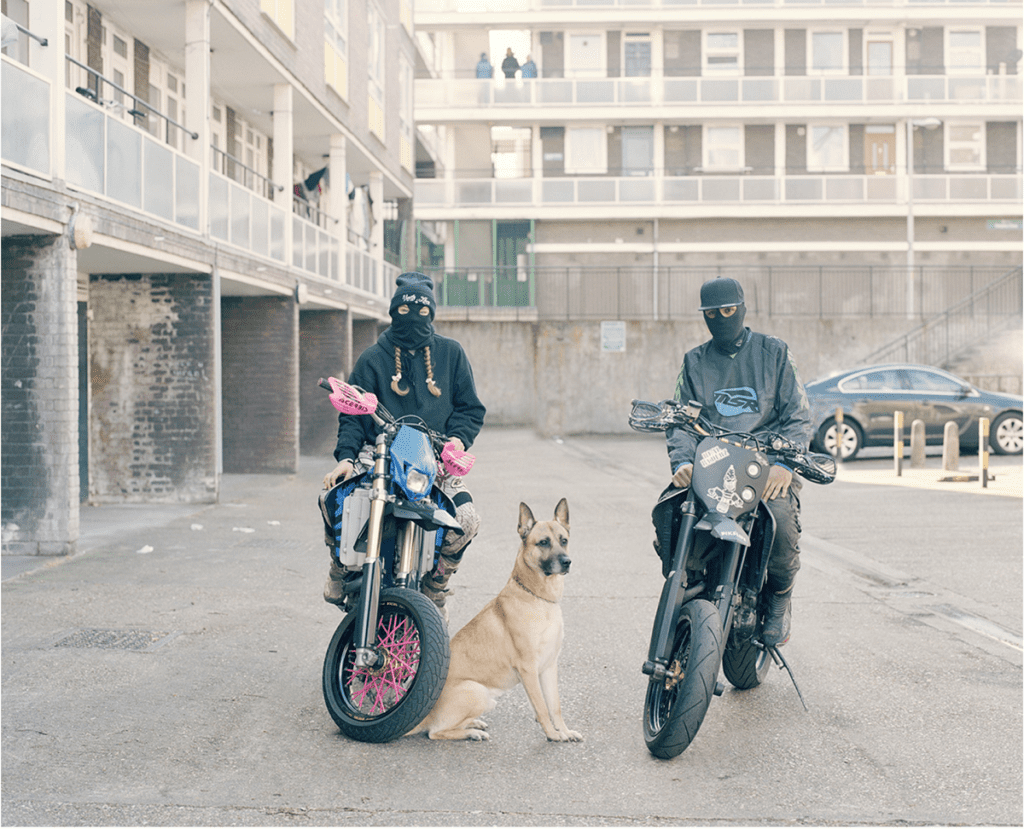 Izzy, Zeus & Naomi © Spencer Murphy
“My approach is very simple. At first it’s just a technical exercise – how do I want to show this person? What lighting and background do I want to use? I try to have that all resolved before there’s any engagement with the sitter,” he says. “After that it becomes more about understanding one another in often brief moments, getting what you want out of a person or creating an environment where they can present themselves to you, unguarded.” He does this through minimal direction, consciously leaving his ego at the door – and hoping his sitter does the same.
Izzy, Zeus & Naomi © Spencer Murphy
“My approach is very simple. At first it’s just a technical exercise – how do I want to show this person? What lighting and background do I want to use? I try to have that all resolved before there’s any engagement with the sitter,” he says. “After that it becomes more about understanding one another in often brief moments, getting what you want out of a person or creating an environment where they can present themselves to you, unguarded.” He does this through minimal direction, consciously leaving his ego at the door – and hoping his sitter does the same.
Although every portrait shoot is interesting for different reasons, working with actors has frequently proved the most enjoyable. “They have an inherent understanding of the craft and being in front of a lens… The pictures often feel like a gift.” But, he adds, “photographing ‘normal’ people is the most rewarding. The time constraints are often less pressured and I’m offered a genuine window into someone’s life that I would never have had had I not been a photographer.”
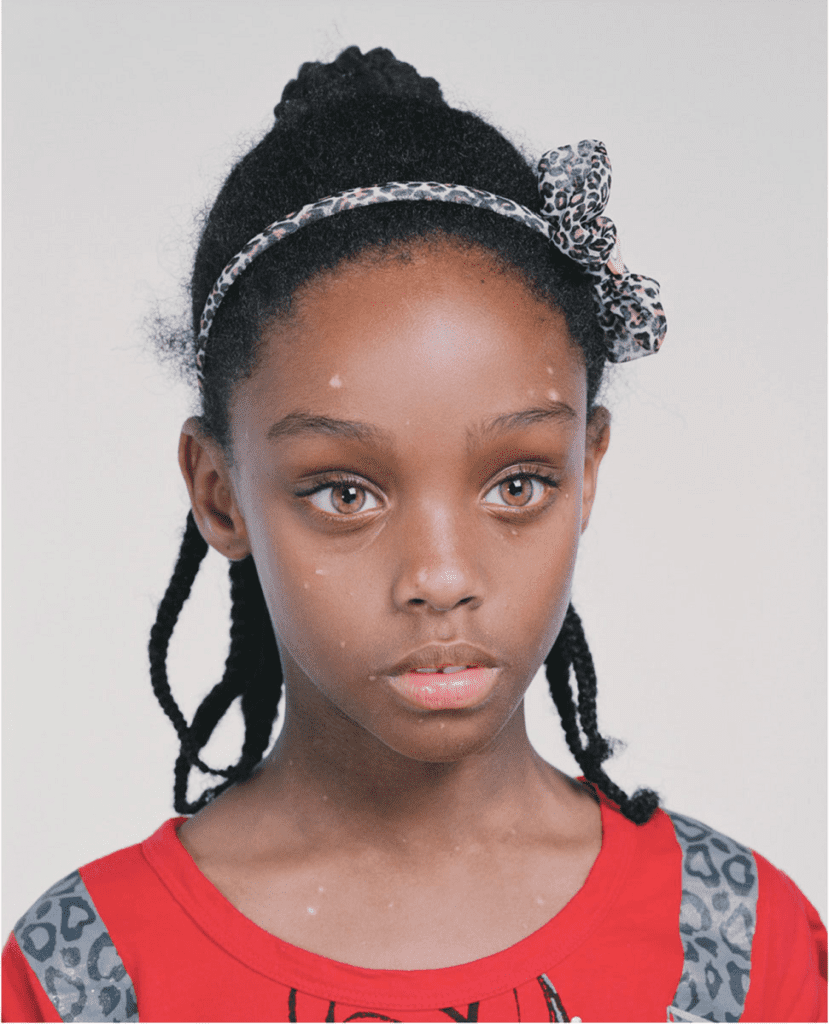 This Kind of Poverty © Spencer Murphy
Born in 1978, Murphy began shooting when his parents bought him a camera at 11. He went on to complete a degree in photography at the well-respected Falmouth University, and assisted for a few years before building up his own practice. Now he combines editorial commissions for clients like The Guardian, The Telegraph and Time with self-initiated projects such as Urban Dirt Bikers, published by Hoxton Mini Press.
This Kind of Poverty © Spencer Murphy
Born in 1978, Murphy began shooting when his parents bought him a camera at 11. He went on to complete a degree in photography at the well-respected Falmouth University, and assisted for a few years before building up his own practice. Now he combines editorial commissions for clients like The Guardian, The Telegraph and Time with self-initiated projects such as Urban Dirt Bikers, published by Hoxton Mini Press.
The biggest learning curve since starting out has been to balance the competing demands of business and art. “You have to have many different heads, different ways of making money, but not so much so that you lose your voice or it negatively effects your output,” he says. “A genuine love, a good eye and a skill all help but you need to be multi-talented.”
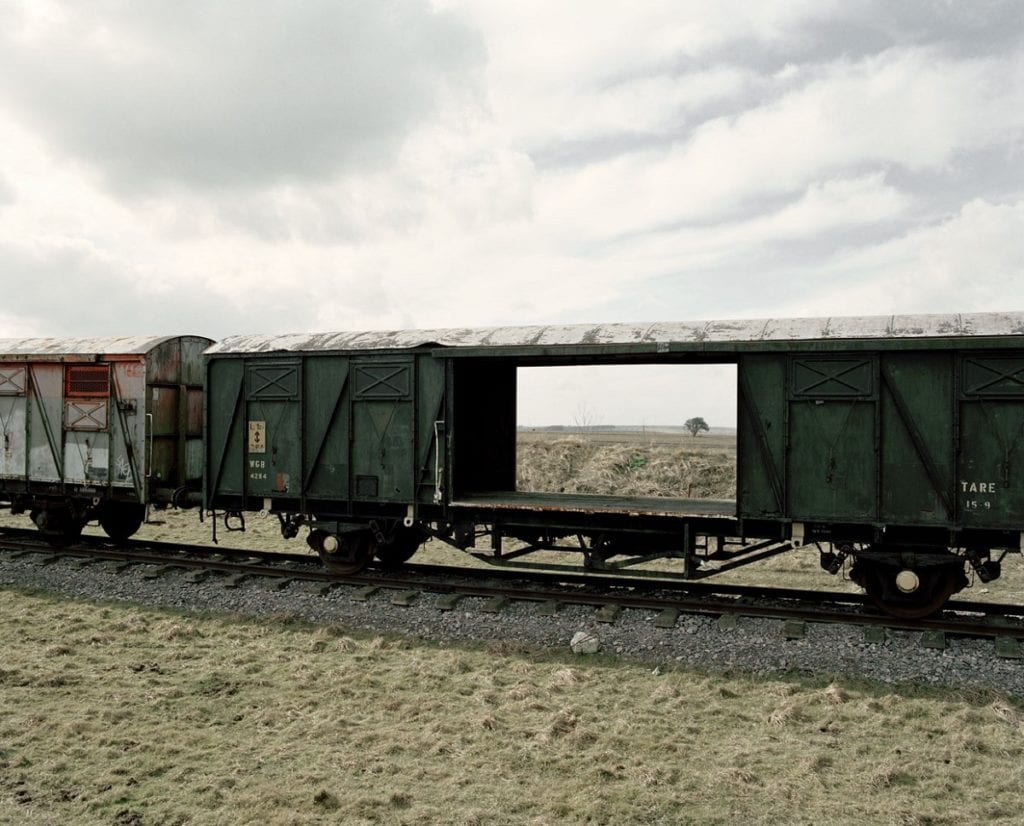 © Spencer Murphy
© Spencer Murphy
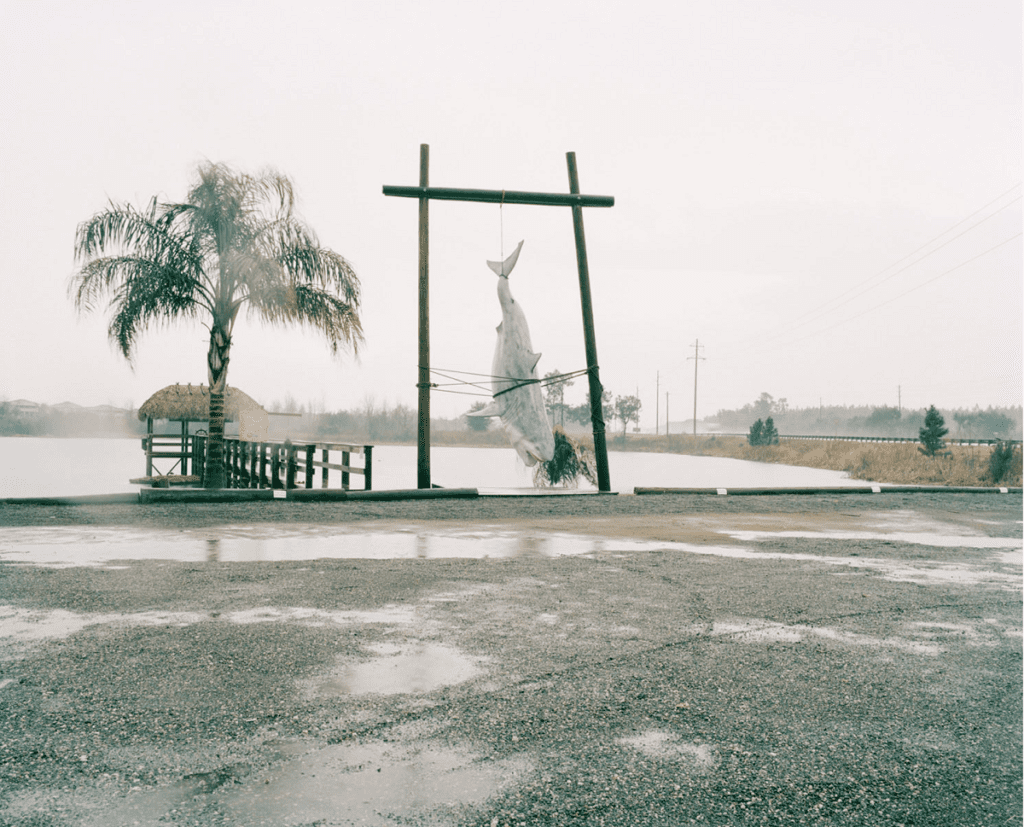 Shark, Florida © Spencer Murphy
Although Murphy shoots predominantly on medium or large-format film, he has continued to experiment with equipment. “I shoot on more cameras now than I ever have done. On some shoots I’ll have two film and two digital cameras because there are different tools for different jobs. Digital has opened up a myriad of different opportunities, the ability to check your work as you go, higher ISOs and shutter speeds. Sensor sizes and file sizes have gotten bigger and bigger. So it would be silly to ignore these advances and not use the tools available to you.”
Shark, Florida © Spencer Murphy
Although Murphy shoots predominantly on medium or large-format film, he has continued to experiment with equipment. “I shoot on more cameras now than I ever have done. On some shoots I’ll have two film and two digital cameras because there are different tools for different jobs. Digital has opened up a myriad of different opportunities, the ability to check your work as you go, higher ISOs and shutter speeds. Sensor sizes and file sizes have gotten bigger and bigger. So it would be silly to ignore these advances and not use the tools available to you.”
Given the chance to try out a new medium format mirrorless digital camera, the Fujifilm GFX 50S, Murphy set off for the mountains of Snowdonia, North Wales. “Landscape has always been a genre where digital has struggled,” he says. “It felt like a perfect camera to have in my pack with just one lens, to be able to reach for, without being weighed down and limiting where you can go. Much in the same way I use my film rangefinder.”
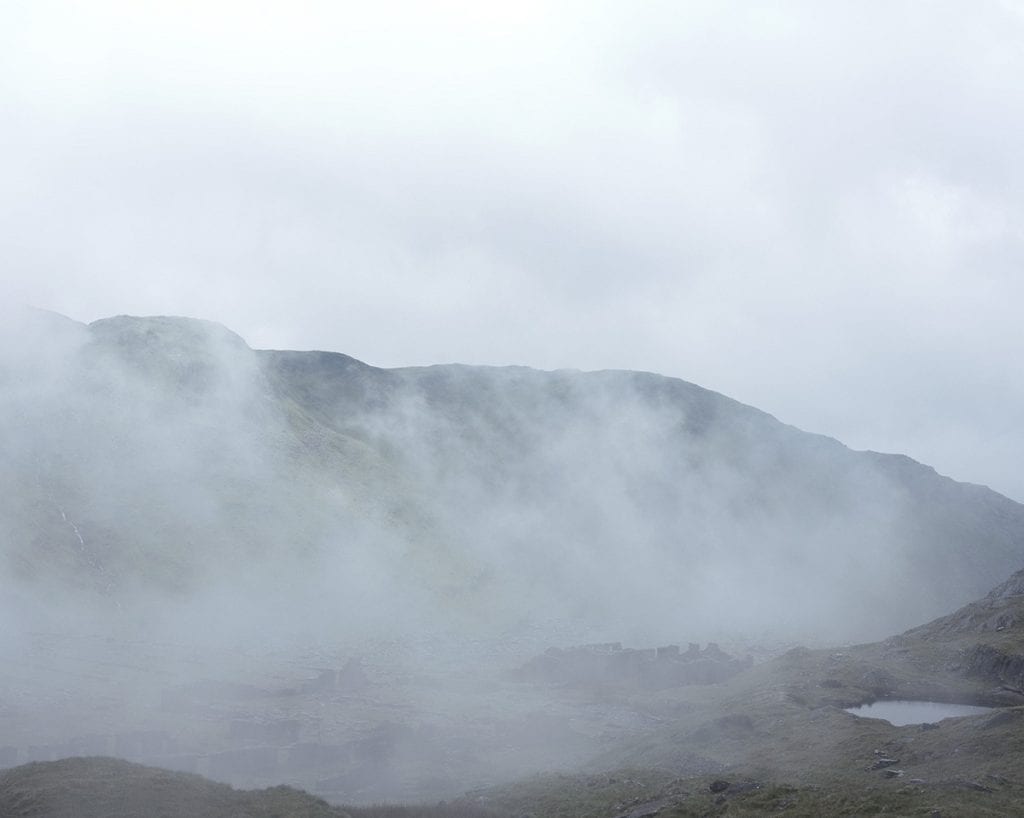 Taken with the Fuji GFX © Spencer Murphy
“From the limited time I spent with the GFX 50S, I really enjoyed it,” he continues. “It felt almost as versatile as a DSLR but with the functionality and quality of shooting more considered medium-format images. The film photographer in me loved having the physical dials. The other feature that separated it from other digital medium-format options, and which I found myself using a lot, was the intuitive ability to pick your point of focus – digital backs require panning to use the autofocus settings. It’s a camera I would definitely consider owning.”
Taken with the Fuji GFX © Spencer Murphy
“From the limited time I spent with the GFX 50S, I really enjoyed it,” he continues. “It felt almost as versatile as a DSLR but with the functionality and quality of shooting more considered medium-format images. The film photographer in me loved having the physical dials. The other feature that separated it from other digital medium-format options, and which I found myself using a lot, was the intuitive ability to pick your point of focus – digital backs require panning to use the autofocus settings. It’s a camera I would definitely consider owning.”
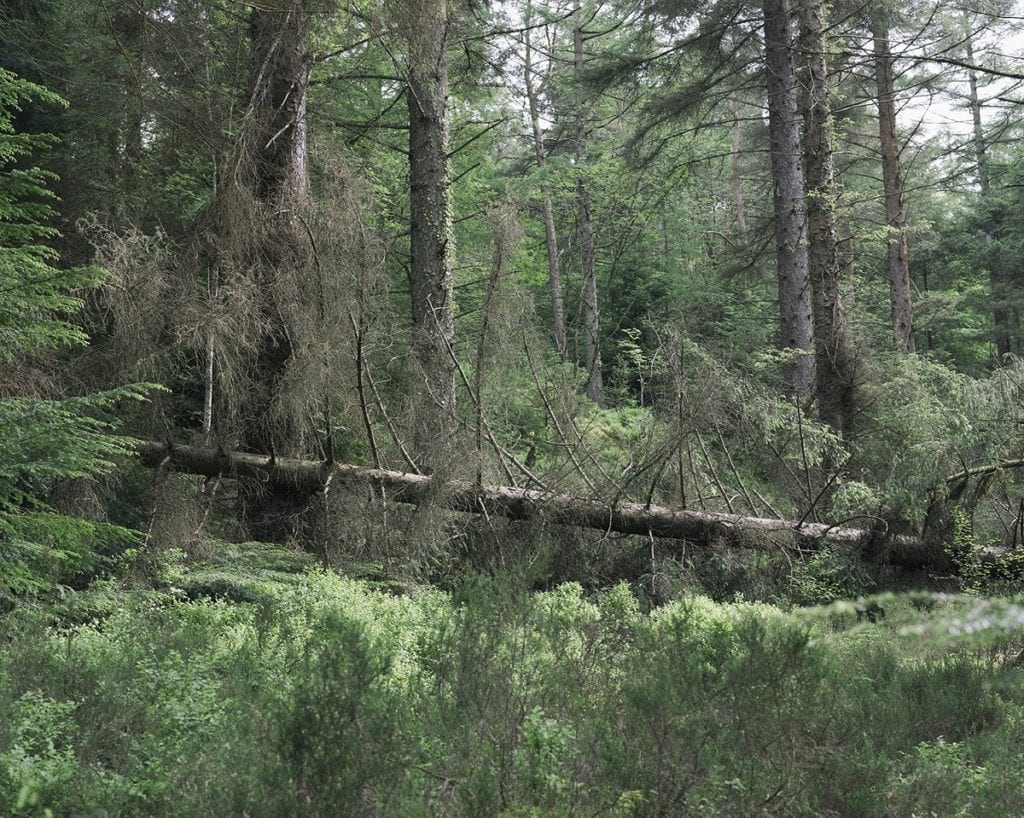 Taken with the Fuji GFX © Spencer Murphy
Murphy is currently in the early stages of his next personal project, whilst also working on commissions for charities and fashion stories. His getaway to the mountains with the GFX 50S provided welcome time out from his busy schedule.
Taken with the Fuji GFX © Spencer Murphy
Murphy is currently in the early stages of his next personal project, whilst also working on commissions for charities and fashion stories. His getaway to the mountains with the GFX 50S provided welcome time out from his busy schedule.
“I love the challenge of portraiture and the interaction, [but] I think landscape is something that comes more naturally and is far more of relaxing a process for me – it offers a break after, quite regularly, photographing people that are reluctant sitters. A landscape can’t really say no.”
The GFX 50S is Fujifilm’s first medium format mirrorless camera system, offering outstanding image quality in a digital format, at an affordable price. It’s available to buy now. For more information please visit the Fujifilm website.
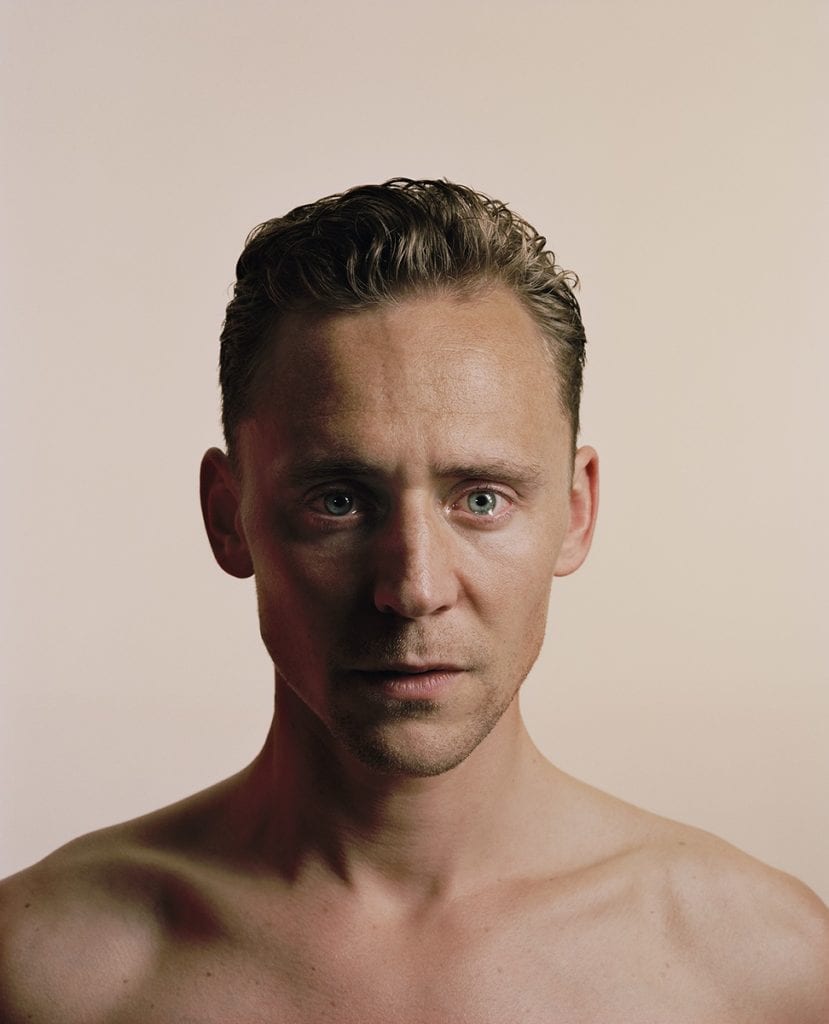 Tom Hiddleston © Spencer Murphy
Sponsored by Fujifilm: This feature was made possible with the support of Fujifilm. Please click here for more information on sponsored content funding at British Journal of Photography.
Tom Hiddleston © Spencer Murphy
Sponsored by Fujifilm: This feature was made possible with the support of Fujifilm. Please click here for more information on sponsored content funding at British Journal of Photography.








